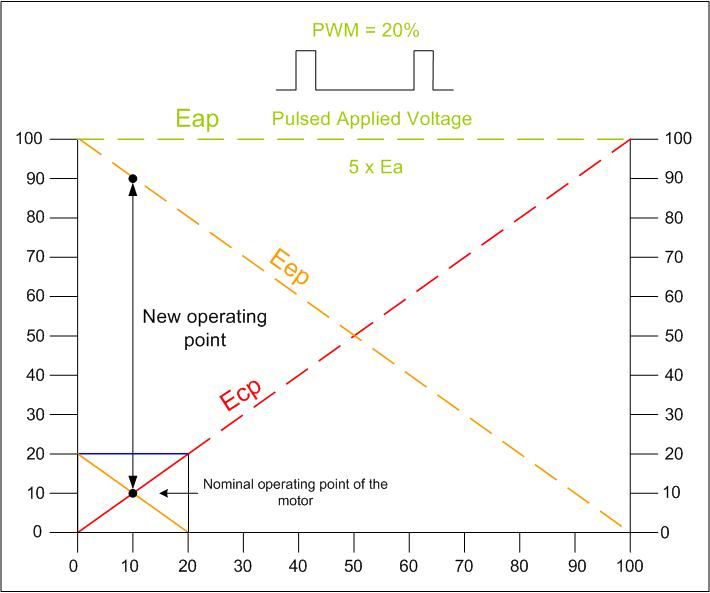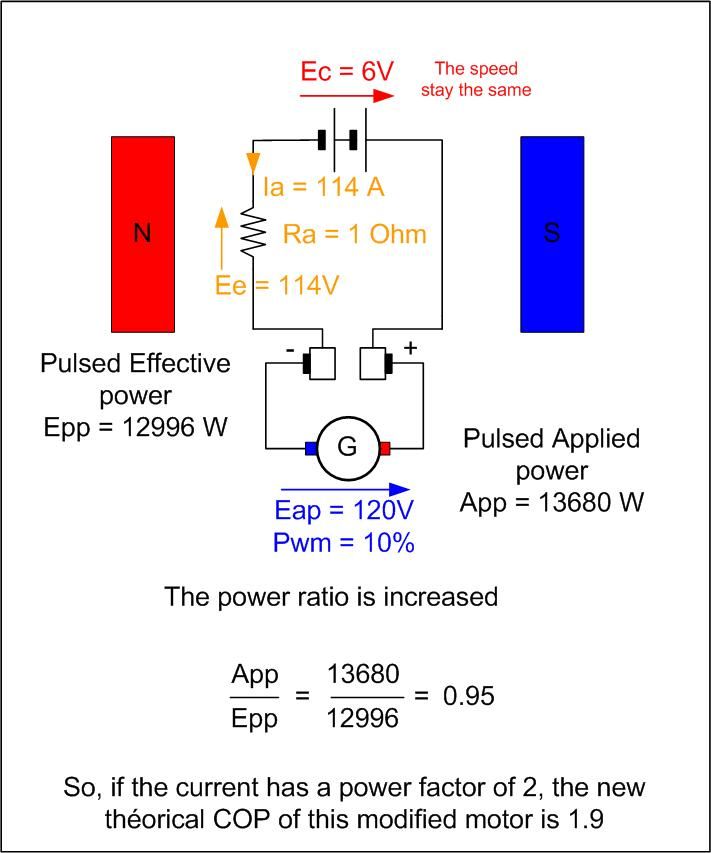

I don't have a variac and just connected it to rectified 220v, big mistake. I need to do a test to establish how I need to organize the power in the circuit, using a variac you can limit the power and avoid my mistake.
Using a standard 12v motor we need to measure the torque and power at high voltage input but lower than normal amps. For example if the motor running at 12v draws 6 amps I want to know how the torque and power compares at say 24v and 3 amps. Is the torque down and how much even though the power is the same?
If this is the case as I expect, I will need to use a different configuration or run the motor at higher power but with a lot more cooling.
The circuit that I have posted multiplies the power when compared to the input but it does it with higher voltage. If I reduce the amps I expect I will have reduced torque and a very inefficient motor. The whole point of this thread which Peter was driving was to give ampere turns and eliminate BEMF. I have worked out how to mitigate the BEMF but I need to confirm this will reduce the efficiency.
I have a circuit which does increase the amps, or at least maintain their level while multiplying the voltage which is good news but I need to compensate for the drop in efficiency.
It is relatively easy to run a standard motor at its normal power with only a fraction of the input but I believe the efficiency is down; however there is a way to create a negative resistance with the trifler coil

I'm willing to share if you can do the test for me.
The other option is to run a 220v motor on 220 volts but at reduced speed to mitigate the BEMF
The first key to the Lockridge device is to recycle the power, next is to supply it to a motor in a way that is efficient for the motor or get a motor that works at that voltage and current. There are plenty of 220v universal motors but their efficiency is low at 35%, multiply that by the generator efficiency at 70% and you have only 24.5% meaning you will need a COP>4 to make it self running.
I have posted the first part already, the recycling circuit which multiplies the COP although I did understate how it is done
 . A standard servo motor or golf cart running at 50% duty cycle under PWM is close to a COP of 2 under light loads. That is the second part of the circuit. I don't have the third part fully sorted yet but I am working on it anthough Aviso has posted part of it even though he is using a different technique.
. A standard servo motor or golf cart running at 50% duty cycle under PWM is close to a COP of 2 under light loads. That is the second part of the circuit. I don't have the third part fully sorted yet but I am working on it anthough Aviso has posted part of it even though he is using a different technique.Building things is very time consuming and expensive when you make mistakes, fortunately I have the time but I don't have the budget at the moment. I want to build a team that will build, test and replicate what I am doing so that the info gets out. Hope you can help
Mike









Leave a comment: